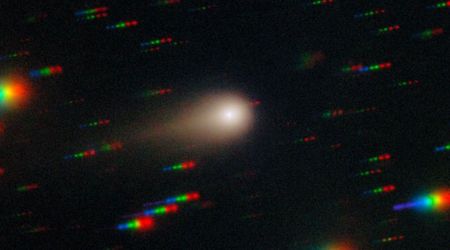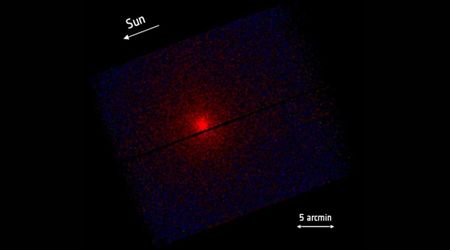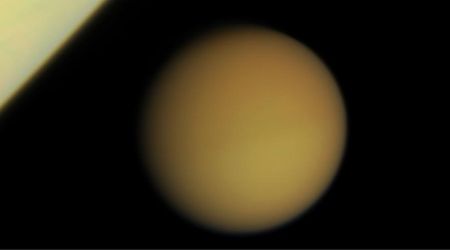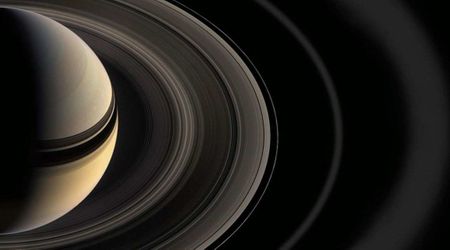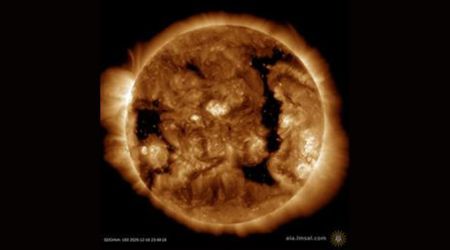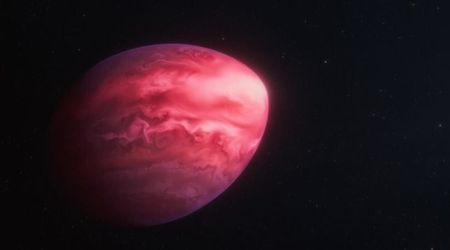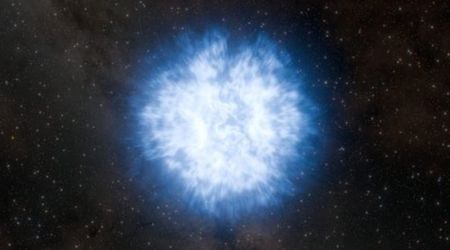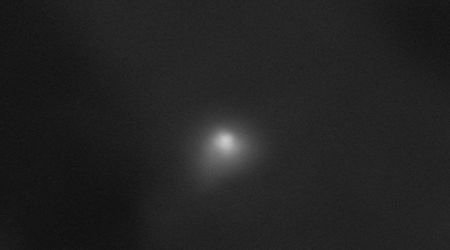The biggest stars in the universe

While the Sun is the largest object in our solar system, it’s not a particularly large star. With a radius of 432,000 miles (690,000 km), and a temperature range from ~1.7 million °F (~1 million °C) to more than ~17 million °F (~10 million °C) in its outermost layer, the Sun belongs to a category of stars called the “yellow dwarfs” or “G-type main sequence stars”. O, B. A and F type main sequence stars, Giants and Supergiants all have larger radii than the Sun.
If the Sun is a small star, what are the biggest stars in the universe?
When we talk about a star’s size, we can either discuss its diameter (radius) or its mass. In both cases, the size of a star is compared to the size of our Sun. There are several methods for calculating stellar angular diameter and different methods may result in different stellar diameters for the same star. Additionally, a star’s size may vary over time. Most stellar radii are expressed as either averages or ranges and lists of largest stars have changed as techniques are refined.
The best way to view these largest stars is with a telescope. This list includes the constellations to give you an idea of where in the sky to look. Let’s see what the largest stars are and where to find them.
1. UY Scuti
- Constellation: Scutum
- Radius: 1,708±192 solar radii
- Diameter: 1.4766 billion miles / 2.3765 billion km
- Distance: 9500 light-years
- Celestial Coordinates: RA 18h 28m 49s | Dec -12° 27’ 10”
How To Find This Star: UY Scuti is located on the outside of Scutum, ~4.5°southwest from, Alpha Scuti (apparent magnitude 3.85), and ~2° northwest from Gamma Scuti (apparent magnitude 4.69).
UY Scuti is a red hypergiant with an apparent magnitude of 9.31. A hypergiant is a rare type of star with an extremely high luminosity, mass, size and mass loss because of its extreme stellar winds. UY Scuti is also a pulsating semi-regular variable star whose magnitude varies from 11.2 to 13.3 over a period of 740.0 days. Its mass is 23.0 solar masses and it’s 47% cooler than the Sun. This star was first cataloged in 1860.

Image credits: Martin Silvertant
2. V766 Centauri Aa
- Constellation: Centaurus
- Radius: 1,492±540 solar radii
- Diameter: 959.8 million miles / 1.5446 billion km
- Distance: 4,900 – 11,700 light-years
- Celestial Coordinates: RA 13h 48m 43s | Dec -62° 41’ 51”
How To Find This Star: V766 Centauri is located outside of Centaurus, ~2.5°southwest from Beta Centauri (apparent magnitude 0.63).
V766 Centauri’s primary star (Aa) is a yellow hypergiant with an apparent magnitude of 6.90. It’s a semi-regular variable whose magnitude varies from 6.17 to 7.50 over a period of 494.0 days. Its mass is 13.0 solar masses and its temperature is 21% cooler than the Sun. A secondary component is located 9.3 arcseconds away and has an apparent magnitude of 9.89.
3. KY Cygni
- Constellation: Cygnus
- Radius: 1,420±284(–2,850±570) solar radii
- Diameter: 1.227 billion miles / 1.976 billion km
- Distance: 5000 light-years
- Celestial Coordinates: RA 20h 26m 46s | Dec 38° 25’ 23”
How To Find This Star: KY Cygni is located below the crossbeam of the Northern Cross asterism, ~2° from Gamma Cygni (apparent magnitude 2.23) and ~6° from Epsilon Cygni (apparent magnitude 2.49).
KY Cygni is a red supergiant with an apparent magnitude of 10.87. It’s also a pulsating long-period variable star whose magnitude varies from 13.5 to 15.5. KY Cygni was discovered in 1930.

Image Credit: Roy Britt / Space.com
4. AH Scorpii
- Constellation: Scorpius
- Radius: 1,411±124 solar radii
- Diameter: 1.219 billion miles / 1.963 billion km
- Distance: 1060 light-years
- Celestial Coordinates: RA 17h 12m 41s | Dec -32° 21’ 5”
How To Find This Star: AH Scorpii is located above the Fishhook asterism, ~6.5° from Lambda Scorpii (apparent magnitude 1.62) and ~5° from Epsilon Scorpii (apparent magnitude 2.28).
AH Scorpii is a red giant with an apparent magnitude of 8.19. This pulsating semi-regular variable star ranges in magnitude from 8.1 to 12.0 over a period of 713.6 days. Its mass is 1.2 solar masses and it’s 40% cooler than the Sun.
5. VV Cephei
- Constellation: Cepheus
- Radius: 1,329.62 solar radii
- Diameter: 1.150 billion miles / 1.851 billion km
- Distance: 163081.67 light-years
- Celestial Coordinates: RA 22h 37m 17s | Dec +58° 32’ 18”
How To Find This Star: W Cephei is located near the bottom of Cepheus. Draw an imaginary line from Zeta Cephei (apparent magnitude 3.33) to Delta Cephei (apparent magnitude 4.07) then extend this line ~1° to W Cephei.
W Cephei is an orange-red supergiant with an apparent magnitude of 7.57. It’s also a variable double star. The primary is a pulsating semi-regular star ranging in magnitude from 7.02 to 9.20. The secondary component is 0.4 arcminutes away and has a magnitude of 8.89. The primary has a mass of 13.0 solar masses and is 21% cooler than the Sun. While W Cephei was cataloged in 1896, it wasn’t known to be an eclipsing binary until 1936.
List of the 25 largest stars in the universe
The table below provides some interesting information about the 25 largest stars in the universe. You can download a copy of this table as a CSV file by clicking on the following link. ("File" -> "Download")
| Rank | Name | Size (solar radii) | Distance (ly) | RA | Dec |
|---|---|---|---|---|---|
| 1 | UY Scuti | 1,708±192 | 9500 | 18h 28m | -12.5° |
| 2 | V766 Centauri Aa | 1,492±540 | 4,900 – 11,700 | 13h 47m | -62.6° |
| 3 | KY Cygni | 1,420±284(–2,850±570) | 5000 | 20h 26m | 38.4° |
| 4 | AH Scorpii | 1,411±124 | 1060 | 17h 12m | -32.4° |
| 5 | W Cephei | 1,329.62 | 163081.67 | 22h 37m | 58.4° |
| 6 | Westerlund 1 W237 | 1,241±70 | 8500 | 16h 47m | -45.9° |
| 7 | BC Cygni | 1,230.27–1,140±228 | 2718 | 20h 22m | 37.6° |
| 8 | IRC -10414 | ~1,200 | 6523 | 18h 23m | -13.7° |
| 9 | PZ Cassiopeiae | 1,190±238(–1,940±388) | 18120.19 | 23h 45m | 61.9° |
| 10 | V1489 Cygni (NML Cygni) | 1,183 | 5250 | 20h 46m | 40.1° |
| 11 | GCIRS 7 | 1,170±60–1,368 | unknown | 17h 45m | -29.0° |
| 12 | Westerlund 1 W26 (Westerlund 1 BKS AS) | 1,165±58–1,221±120 | 11500 | 16h 47m | -45.8° |
| 13 | RW Cephei | 1,157.92 | 2741 | 22h 24m | 56.1° |
| 14 | RT Carinae | 1,090±218 | 1431 | 10h 45m | -59.5° |
| 15 | V396 Centauri | 1,070±214 – 1,145.31 | 7389.29 | 13h 18m | 61.7° |
| 16 | V602 Carinae | 1,050±165 | 132 | 11h 14m | -60.2° |
| 17 | IM Cassiopeiae | 1,039.43 | 2886 | 1h 33m | 62.4° |
| 18 | CK Carinae | 1,013.42 – 1,060±212 | 526 | 10h 25m | -60.3° |
| 19 | KW Sagittarii | 994.794 – 1,009±142 | 6200 | 17h 53m | -28.0° |
| 20 | UW Aquilae | 946.285 | 150 | 18h 58m | -0.5° |
| 21 | AZ Cephei | 944.221 | 14267.86 | 22h 9m | 59.7° |
| 22 | CD Hydri | 920 | 2198 | 1h 36m | -76.3° |
| 23 | CL Carinae | 919.787 | 213 | 10h 54m | -61.2° |
| 24 | AZ Cygni | 911+57 | 294 | 20h 58m | 46.5° |
| 25 | NSV 25875 | 891 | unknown | 22h 19m | 59.9° |
Further information
The video below, made by the famous youtube channel "Kurzgesagt - In a Nutshell", takes a deeper look into the different sizes of stars and compares them to each other.
JWST detects clues of supermassive stars
With the help of The James Webb Space Telescope (JWST), a team of researchers discovered evidence suggesting the existence of supermassive stars, termed as 'celestial monsters,' that may have been present during the dawn of the universe, just 440 million years after the Big Bang. These stars are believed to be up to 10,000 times the mass of the sun.
The researchers detected these traces by analyzing the light coming from globular clusters in the galaxy GN-z11, located 13.3 billion light-years away from Earth. They observed high levels of nitrogen, which suggests the combustion of hydrogen at extremely high temperatures, something only supermassive stars could achieve.
These stars, burning at extremely high temperatures, generated heavier elements and influenced the composition of later, smaller stars. By the look of it, our current list of the largest stars in the known universe could soon be outclassed by these recent discoveries. Exciting times!
